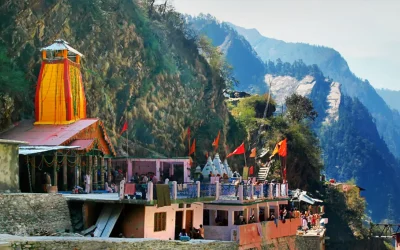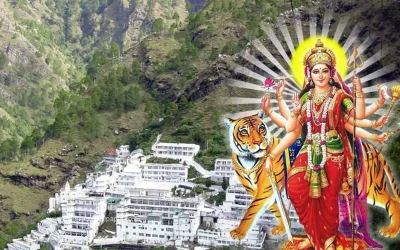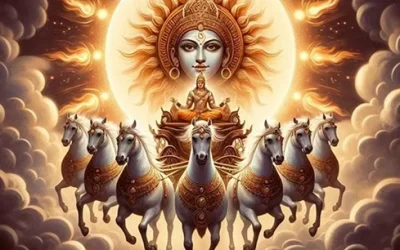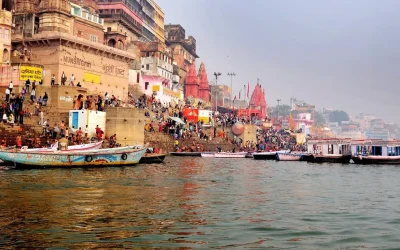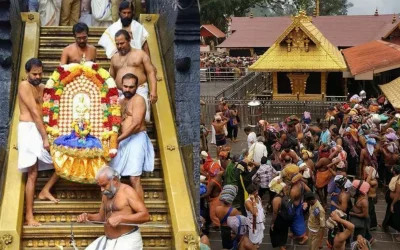History of Kedarnath Temple
Nestled amidst the towering peaks of the Himalayas, at an elevation of 3,583 meters above sea level, lies one of the holiest Hindu temples in India – the Kedarnath Temple. This ancient shrine, dedicated to Lord Shiva, holds profound spiritual significance and attracts pilgrims and devotees from far and wide. This blog delves into the rich history, spiritual aura, architectural marvels, and practical aspects of visiting the Kedarnath Temple.
History and Legends
The history of Kedarnath Temple is steeped in mythological tales and legends that evoke a sense of awe and reverence among its visitors. According to Hindu mythology, the temple is believed to have been built by the Pandavas, the legendary heroes of the epic Mahabharata. It is said that after the great war of Kurukshetra, the Pandavas sought the blessings of Lord Shiva to absolve themselves of the sins committed during the war. However, Lord Shiva eluded them repeatedly and finally took refuge at Kedarnath as a bull. When discovered by the Pandavas, the bull’s body parts are said to have appeared at various locations now revered as Panch Kedar (five temples of Lord Shiva).
Another legend associated with Kedarnath Temple is that it was re-established by Adi Shankaracharya in the 8th century AD. He is credited with reviving many ancient Hindu temples across India, including the four major centers known as Char Dham.
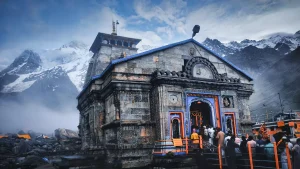
Architecture and Design
The architectural style of Kedarnath Temple is simple yet awe-inspiring. Built entirely of massive stone slabs over a rectangular platform, the temple resembles the traditional North Indian style of temple architecture. The main sanctum sanctorum houses the lingam (an iconic representation of Lord Shiva), considered one of the 12 Jyotirlingas – divine manifestations of Lord Shiva spread across India.
The temple’s exterior is adorned with intricate carvings and sculptures that depict various mythological figures and motifs. The surrounding natural beauty of the Himalayas adds to the temple’s majestic presence, making it a sight for pilgrims and tourists alike.
Spiritual Significance
For devout Hindus, a pilgrimage to Kedarnath Temple holds immense spiritual significance. Visiting this sacred site and offering prayers to Lord Shiva is believed to cleanse one’s soul of impurities and pave the way for spiritual liberation (moksha). The journey to Kedarnath is often considered a test of devotion and endurance, as pilgrims undertake a challenging trek through rugged terrain and unpredictable weather conditions.
The temple remains open only for a few months each year due to extreme weather conditions in the region. This limited accessibility adds to the sanctity and exclusivity of the pilgrimage experience, attracting thousands of devotees who brave the elements to seek the blessings of Lord Shiva.
Pilgrimage Journey
The pilgrimage to Kedarnath typically begins from the town of Gaurikund, which serves as the base camp for travellers. From Gaurikund, pilgrims embark on a 16-kilometre trek that takes them through picturesque landscapes, dense forests, and cascading waterfalls. The journey is a physical trek and a spiritual odyssey that tests one’s determination and faith.
Along the trekking route are several small temples and resting points where pilgrims can take a break, offer prayers, and recharge before continuing their ascent. Ponies and palanquins are available for those who may find the trek physically challenging, ensuring that devotees of all ages and abilities can undertake the pilgrimage.
Upon reaching Kedarnath, pilgrims are greeted by the magnificent temple nestled amidst snow-capped peaks and pristine surroundings. The atmosphere resonates with the chanting of Vedic hymns and the ringing of temple bells, creating an ambience of divinity and serenity.
Timings and Festivals
Kedarnath Temple remains open to devotees from the end of April or early May (depending on the Hindu calendar) until the onset of winter, usually around the beginning of November. During these months, the temple sees a steady influx of pilgrims who come to pay homage to Lord Shiva.
The daily rituals at Kedarnath Temple follow a strict schedule, starting with the Mangala Aarti (morning prayer) around 4:00 AM. Throughout the day, the temple priests perform various rituals, such as Abhishekam (ritual bathing of the deity) and Bhog (offering of food). The evening sees the Sandhya Aarti (evening prayer), a mesmerizing sight as the temple is illuminated with oil lamps and conch shells filling the air.
Apart from daily rituals, several festivals are enthusiastically celebrated at Kedarnath Temple. One of the most significant is Maha Shivaratri, which attracts thousands of devotees to participate in special prayers and rituals dedicated to Lord Shiva.
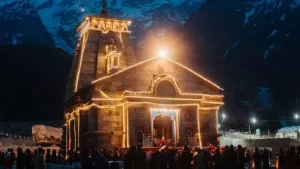
Practical Information for Visitors
For those planning a pilgrimage to Kedarnath Temple, it is essential to be physically and logistically well-prepared. Here are some practical tips:
- Trekking: The trek from Gaurikund to Kedarnath is challenging and requires adequate physical fitness. It is advisable to start the journey early in the morning to avoid the harsh midday sun and to pace oneself throughout the trek.
- Accommodation: Accommodation options in Kedarnath are limited and basic. It is advisable to book accommodation in advance, especially during peak pilgrimage seasons, to ensure a comfortable stay.
- Weather: The weather in the Himalayas can be unpredictable. Carrying warm clothing, rain gear, and sturdy trekking shoes is advisable. Sunscreen and sunglasses are also recommended due to the high-altitude sun exposure.
- Altitude: Kedarnath Temple is located at a high altitude, and some visitors may experience symptoms of altitude sickness. It is advisable to acclimatize properly and stay hydrated during the trek.
Conclusion
In conclusion, the Kedarnath Temple is not just a place of worship but a spiritual journey that transcends physical boundaries. It embodies the union of divinity and nature, offering solace and spiritual rejuvenation to all who seek it. The temple’s timeless beauty, rich history, and profound spiritual significance inspire millions of devotees, making it a cherished symbol of faith and devotion in the heart of the Himalayas.
Visiting Kedarnath Temple is not merely a pilgrimage but an experience that leaves an indelible mark on the soul, reinforcing the belief in the eternal presence of Lord Shiva and the power of unwavering devotion.
As you embark on your journey to Kedarnath, may you find peace, enlightenment, and divine blessings in the tranquil embrace of the Himalayas.

